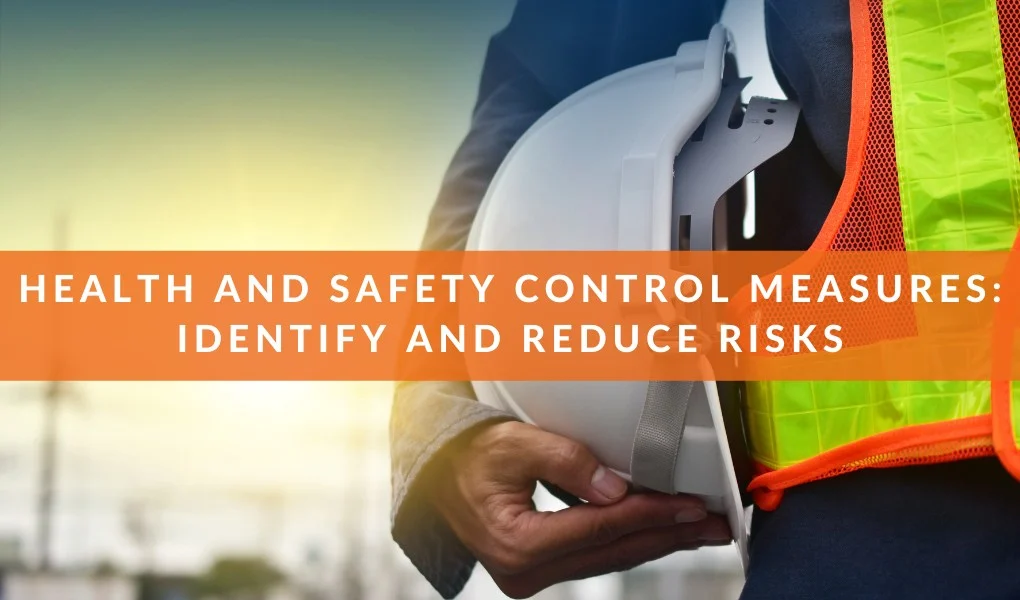
Health and Safety Control Measures: Identify and Reduce Risks
A safety manager’s job is to put health and safety control measures in place to minimize risk in the workplace, reduce potential hazards, and prevent worker illnesses and injuries. These efforts may include requiring employees to wear personal protective equipment, or adding safety guards to sharp or moving parts of equipment and machinery.
In short, these methods and control measures protect employees and reduce the risk of workplace hazards.
What Exactly Are Health and Safety Control Measures, and Why Are They Necessary?
Ensuring worker and workplace safety are paramount to running a profitable business. This means putting in place carefully crafted policies and procedures, developing clear training and instructions, and keeping up to date on equipment, inspections, and maintenance.
The type and scope of measures required for a business depend, of course, on the size and type of the business. Naturally, the set of policies and procedures necessary for a small office environment are drastically different than those required for a large industrial manufacturing facility.
Give Me Some Examples
Let’s talk about some available methods you might use to identify and reduce the risk of health and safety hazards in your workplace environment:
Elimination – Experts recommend attempting to eliminate the hazard, first and foremost, before implementing other methods. Why waste time and effort trying to plan around a potential issue if you can get rid of it altogether? Examples of elimination may include outsourcing the work or discontinuing the use of dangerous and unnecessary equipment or procedures.
Training – Comprehensive education empowers employees and supervisors to know how to operate equipment properly, understand safety procedures, and work safely. Additionally, employees who are involved and adequately trained can serve as an extra safeguard because they’re able to identify and report other possible hazards.
Substitution – If you can’t eliminate the process that poses a potential risk, you might be able to implement substitutions that offer fewer potential risks. For example, you might swap out dangerous cutting tools or chemicals for safer alternatives.
Rules – Whether outlining proper handling of machinery, ensuring a clean and safe work environment, or setting standards for expectations of employee performance and behavior, using rules as a health and safety control measure allows an employer to determine policies and procedures that have been developed with health and safety in mind. These guidelines must be clear and communicated, which may mean going over the rules with employees and posting the rules in a central location like the breakroom or near a piece of equipment. It may also mean occasional reminders, discussions during daily safety moments or “toolbox talks.”
Personal protective equipment (PPE) – Clothing and equipment that protects workers from injury or illness. PPE includes safety glasses, gloves, respirators, hard hats, harnesses, etc. Although PPE does offer an additional level of protection, it should be considered a last line of defense, in conjunction with some of the control measures discussed above.
Implementation
The first step to implementing these and other risk control measures in workplace environments is to do a comprehensive observation of the entire workplace, essentially a risk assessment. This is where you’ll identify potential hazards, be they areas, situations, procedures, equipment, or other factors that could possibly result in illness or injury.
If you’re not sure where to start or what to look for, it may be helpful to consult the hierarchy of controls, part of OSHA’s guidelines on the hazard-identification process. The guidelines should help you determine which methods are most important to your industry-specific applications.
Next, evaluate and prioritize the risks you discover. Obviously, the most serious dangers should be addressed first. And finally, develop, then implement what you determine to be the appropriate health and safety control measures to isolate, reduce, or eliminate these risks.
Download our Safe Cutting Paper to reduce workplace injuries

